Vinculin Recombinant Rabbit Monoclonal Antibody [JM42-43]

Specification
Catalog# ET1705-94
Vinculin Recombinant Rabbit Monoclonal Antibody [JM42-43]
-
WB
-
IF-Cell
-
IF-Tissue
-
IHC-P
-
Human
-
Mouse
-
Rat
Overview
Product Name
Vinculin Recombinant Rabbit Monoclonal Antibody [JM42-43]
Antibody Type
Recombinant Rabbit monoclonal Antibody
Immunogen
Synthetic peptide within human Vinculin aa 1,000-1,060.
Species Reactivity
Human, Mouse, Rat
Validated Applications
WB, IF-Cell, IF-Tissue, IHC-P
Molecular Weight
Predicted band size: 124 kDa
Positive Control
HepG2 cell lysate, HeLa cell lysate, NIH/3T3 cell lysate, C6 cell lysate, Mouse spleen tissue lysate, Rat kidney tissue lysate, NIH/3T3, C6, HeLa, mouse spleen tissue, mouse testis tissue, rat colon tissue, rat spleen tissue, rat testis tissue.
Conjugation
unconjugated
Clone Number
JM42-43
RRID
Product Features
Form
Liquid
Storage Instructions
Shipped at 4℃. Store at +4℃ short term (1-2 weeks). It is recommended to aliquot into single-use upon delivery. Store at -20℃ long term.
Storage Buffer
1*TBS (pH7.4), 0.05% BSA, 40% Glycerol. Preservative: 0.05% Sodium Azide.
Isotype
IgG
Purification Method
Protein A affinity purified.
Application Dilution
-
WB
-
1:20,000-1:50,000
-
IF-Cell
-
1:200-1:1,000
-
IF-Tissue
-
1:500-1:4,000
-
IHC-P
-
1:5,000-1:20,000
Applications in Publications
Species in Publications
| Mouse | See 9 publications below |
| Human | See 7 publications below |
| Rat | See 2 publications below |
Target
Function
Focal adhesions are identified as areas within the plasma membrane of tissue culture cells that adhere tightly to the underlying substrate. In vivo, these regions are involved in the adhesion of cells to the extracellular matrix. Paxillin and vinculin are cytoskeletal, focal adhesion proteins that are components of a protein complex which links the Actin network to the plasma membrane. Vinculin binding sites have been identified on other cytoskeletal proteins, including Talin and α-actinin. In addition, vinculin, Talin and α-actinin each contain Actin binding sites. Expression of vinculin and Talin have been shown to be affected by the level of Actin expression. α-Actinin has been shown to link Actin to integrins in the plasma membrane through interactions with the vinculin and Talin complex or by a direct interaction with integrin.
Background References
1. King HO et al. RAD51 Is a Selective DNA Repair Target to Radiosensitize Glioma Stem Cells. Stem Cell Reports 8:125-139 (2017).
2. Boyette LB et al. Phenotype, function, and differentiation potential of human monocyte subsets. PLoS One 12:e0176460 (2017).
Sequence Similarity
Belongs to the vinculin/alpha-catenin family.
Tissue Specificity
Metavinculin is muscle-specific.
Post-translational Modification
Phosphorylated; on serines, threonines and tyrosines. Phosphorylation on Tyr-1133 in activated platelets affects head-tail interactions and cell spreading but has no effect on actin binding nor on localization to focal adhesion plaques (By similarity).; Acetylated; mainly by myristic acid but also by a small amount of palmitic acid.
Subcellular Location
Cell junction, Cell membrane, Cytoplasm, Cytoskeleton, Membrane.
Synonyms
CMD1W antibody
CMH15 antibody
Epididymis luminal protein 114 antibody
HEL114 antibody
Metavinculin antibody
MV antibody
MVCL antibody
OTTHUMP00000019861 antibody
OTTHUMP00000019862 antibody
VCL antibody
ExpandCMD1W antibody
CMH15 antibody
Epididymis luminal protein 114 antibody
HEL114 antibody
Metavinculin antibody
MV antibody
MVCL antibody
OTTHUMP00000019861 antibody
OTTHUMP00000019862 antibody
VCL antibody
VINC antibody
VINC_HUMAN antibody
Vinculin antibody
CollapseImages
-

Western blot analysis of Vinculin on different lysates with Rabbit anti-Vinculin antibody (ET1705-94) at 1/20,000 dilution.
Lane 1: HepG2 cell lysate (15 µg/Lane)
Lane 2: HeLa cell lysate (15 µg/Lane)
Lane 3: NIH/3T3 cell lysate (15 µg/Lane)
Lane 4: C6 cell lysate (15 µg/Lane)
Lane 5: Mouse spleen tissue lysate (20 µg/Lane)
Lane 6: Rat kidney tissue lysate (20 µg/Lane)
Predicted band size: 124 kDa
Observed band size: 124 kDa
Exposure time: 1 minute 21 seconds;
4-20% SDS-PAGE gel.
Proteins were transferred to a PVDF membrane and blocked with 5% NFDM/TBST for 1 hour at room temperature. The primary antibody (ET1705-94) at 1/20,000 dilution was used in 5% NFDM/TBST at 4℃ overnight. Goat Anti-Rabbit IgG - HRP Secondary Antibody (HA1001) at 1/50,000 dilution was used for 1 hour at room temperature. -

☑ Knockdown (KD)
Western blot analysis of Vinculin on different lysates with Rabbit anti-Vinculin antibody (ET1705-94) at 1/20,000 dilution.
Lane 1: HAP1-parental cell lysate
Lane 2: HAP1-Vinculin KD cell lysate
Lysates/proteins at 10 µg/Lane.
Predicted band size: 124 kDa
Observed band size: 124 kDa
Exposure time: 10 seconds; ECL: K1801;
4-20% SDS-PAGE gel.
Proteins were transferred to a PVDF membrane and blocked with 5% NFDM/TBST for 1 hour at room temperature. The primary antibody (ET1705-94) at 1/20,000 dilution was used in K1803 at 4℃ overnight. Goat Anti-Rabbit IgG - HRP Secondary Antibody (HA1001) at 1/50,000 dilution was used for 1 hour at room temperature. -

Immunocytochemistry analysis of NIH/3T3 cells labeling Vinculin with Rabbit anti-Vinculin antibody (ET1705-94) at 1/250 dilution.
Cells were fixed in 4% paraformaldehyde for 20 minutes at room temperature, permeabilized with 0.1% Triton X-100 in PBS for 5 minutes at room temperature, then blocked with 1% BSA in 10% negative goat serum for 1 hour at room temperature. Cells were then incubated with Rabbit anti-Vinculin antibody (ET1705-94) at 1/1250 dilution in 1% BSA in PBST overnight at 4 ℃. Goat Anti-Rabbit IgG H&L (iFluor™ 488, HA1121) was used as the secondary antibody at 1/1,000 dilution. PBS instead of the primary antibody was used as the secondary antibody only control. Nuclear DNA was labelled in blue with DAPI.
Beta tubulin (M1305-2, red) was stained at 1/100 dilution overnight at +4℃. Goat Anti-Mouse IgG H&L (iFluor™ 594, HA1126) was used as the secondary antibody at 1/1,000 dilution. -

Immunocytochemistry analysis of C6 cells labeling Vinculin with Rabbit anti-Vinculin antibody (ET1705-94) at 1/250 dilution.
Cells were fixed in 4% paraformaldehyde for 20 minutes at room temperature, permeabilized with 0.1% Triton X-100 in PBS for 5 minutes at room temperature, then blocked with 1% BSA in 10% negative goat serum for 1 hour at room temperature. Cells were then incubated with Rabbit anti-Vinculin antibody (ET1705-94) at 1/1250 dilution in 1% BSA in PBST overnight at 4 ℃. Goat Anti-Rabbit IgG H&L (iFluor™ 488, HA1121) was used as the secondary antibody at 1/1,000 dilution. PBS instead of the primary antibody was used as the secondary antibody only control. Nuclear DNA was labelled in blue with DAPI.
Beta tubulin (M1305-2, red) was stained at 1/100 dilution overnight at +4℃. Goat Anti-Mouse IgG H&L (iFluor™ 594, HA1126) was used as the secondary antibody at 1/1,000 dilution. -

Immunocytochemistry analysis of HeLa cells labeling Vinculin with Rabbit anti-Vinculin antibody (ET1705-94) at 1/1,000 dilution.
Cells were fixed in 100% precooled methanol for 5 minutes at room temperature, then blocked with 1% BSA in 10% negative goat serum for 1 hour at room temperature. Cells were then incubated with Rabbit anti-Vinculin antibody (ET1705-94) at 1/1,000 dilution in 1% BSA in PBST overnight at 4 ℃. Goat Anti-Rabbit IgG H&L (iFluor™ 488, HA1121) was used as the secondary antibody at 1/1,000 dilution. PBS instead of the primary antibody was used as the secondary antibody only control. Nuclear DNA was labelled in blue with DAPI. -

Immunohistochemical analysis of paraffin-embedded mouse spleen tissue with Rabbit anti-Vinculin antibody (ET1705-94) at 1/20,000 dilution.
The section was pre-treated using heat mediated antigen retrieval with Tris-EDTA buffer (pH 9.0) for 20 minutes. The tissues were blocked in 1% BSA for 20 minutes at room temperature, washed with ddH2O and PBS, and then probed with the primary antibody (ET1705-94) at 1/20,000 dilution for 1 hour at room temperature. The detection was performed using an HRP conjugated compact polymer system. DAB was used as the chromogen. Tissues were counterstained with hematoxylin and mounted with DPX. -

Immunohistochemical analysis of paraffin-embedded mouse testis tissue with Rabbit anti-Vinculin antibody (ET1705-94) at 1/20,000 dilution.
The section was pre-treated using heat mediated antigen retrieval with Tris-EDTA buffer (pH 9.0) for 20 minutes. The tissues were blocked in 1% BSA for 20 minutes at room temperature, washed with ddH2O and PBS, and then probed with the primary antibody (ET1705-94) at 1/20,000 dilution for 1 hour at room temperature. The detection was performed using an HRP conjugated compact polymer system. DAB was used as the chromogen. Tissues were counterstained with hematoxylin and mounted with DPX. -

Immunohistochemical analysis of paraffin-embedded rat colon tissue with Rabbit anti-Vinculin antibody (ET1705-94) at 1/20,000 dilution.
The section was pre-treated using heat mediated antigen retrieval with Tris-EDTA buffer (pH 9.0) for 20 minutes. The tissues were blocked in 1% BSA for 20 minutes at room temperature, washed with ddH2O and PBS, and then probed with the primary antibody (ET1705-94) at 1/20,000 dilution for 1 hour at room temperature. The detection was performed using an HRP conjugated compact polymer system. DAB was used as the chromogen. Tissues were counterstained with hematoxylin and mounted with DPX. -

Immunohistochemical analysis of paraffin-embedded rat spleen tissue with Rabbit anti-Vinculin antibody (ET1705-94) at 1/20,000 dilution.
The section was pre-treated using heat mediated antigen retrieval with Tris-EDTA buffer (pH 9.0) for 20 minutes. The tissues were blocked in 1% BSA for 20 minutes at room temperature, washed with ddH2O and PBS, and then probed with the primary antibody (ET1705-94) at 1/20,000 dilution for 1 hour at room temperature. The detection was performed using an HRP conjugated compact polymer system. DAB was used as the chromogen. Tissues were counterstained with hematoxylin and mounted with DPX. -

Immunohistochemical analysis of paraffin-embedded rat testis tissue with Rabbit anti-Vinculin antibody (ET1705-94) at 1/20,000 dilution.
The section was pre-treated using heat mediated antigen retrieval with Tris-EDTA buffer (pH 9.0) for 20 minutes. The tissues were blocked in 1% BSA for 20 minutes at room temperature, washed with ddH2O and PBS, and then probed with the primary antibody (ET1705-94) at 1/20,000 dilution for 1 hour at room temperature. The detection was performed using an HRP conjugated compact polymer system. DAB was used as the chromogen. Tissues were counterstained with hematoxylin and mounted with DPX. -

Flow cytometric analysis of HeLa cells labeling Vinculin.
Cells were fixed and permeabilized. Then stained with the primary antibody (ET1705-94, 1μg/mL) (red) compared with Rabbit IgG Isotype Control (green). After incubation of the primary antibody at +4℃ for an hour, the cells were stained with a iFluor™ 488 conjugate-Goat anti-Rabbit IgG Secondary antibody (HA1121) at 1/1,000 dilution for 30 minutes at +4℃. Unlabelled sample was used as a control (cells without incubation with primary antibody; black).
Please note: All products are "FOR RESEARCH USE ONLY AND ARE NOT INTENDED FOR DIAGNOSTIC OR THERAPEUTIC USE"
Citation
-
Mussel-inspired bifunctional chimeric peptides macromolecules functionalize 3D-printed porous scaffolds for enhanced antimicrobial and osseointegration properties in bone defect repair
Author: Ziyang Bai, Yifan Zhao, Wenjun Zhang, Chenying Cui, Jingyu Yan, Meijun Du, Jiahui Tong, Yingyu Liu, Ying Zhang, Ke Zhang, Binbin Zhang, Xia Li, Xiuping Wu, Bing Li
PMID: 40174844
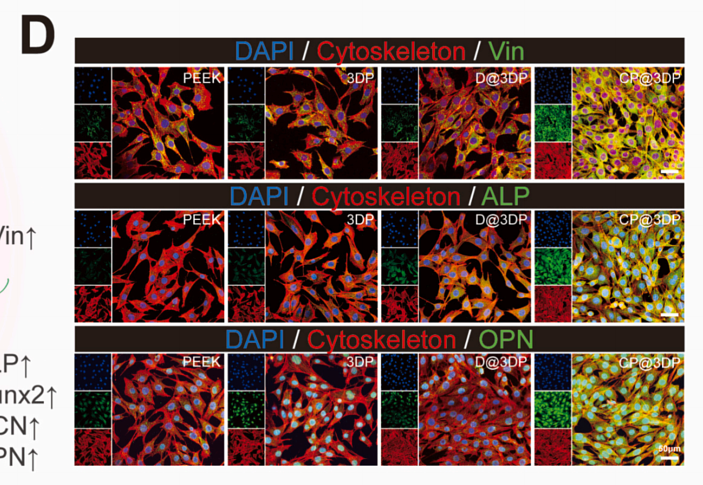
Journal: International Journal Of Biological Macromolecules
Application: IF
Reactivity: Rat
Publish date: 2025 Mar
-
Citation
-
Targeting MAN1B1 potently enhances bladder cancer antitumor immunity via deglycosylation of CD47
Author: Jie Zhang, Chen Zhang, Ruichen Zang, Weiwu Chen, Yining Guo, Haofei Jiang, Jing Le, Kunyu Wang, Haobo Fan, Xudong Wang, Sisi Mo, Peng Gao, Wenhao Guo, Xinrong Jiang, Fengbin Gao, Junming Jiang, Juyan Zheng, Yuxing Chen, Yicheng Chen, Yanlan Yu, Guoqing Ding
PMID: 40493414
Journal: Cancer Communications
Application: WB
Reactivity: Human,Mouse
Publish date: 2025 Jun
-
Citation
-
ROS-Responsive Hydrogel for Localized Delivery of Nampt and Stat3 Inhibitors Exhibits Synergistic Antitumor Effects in Colorectal Cancer Through Ferroptosis Induction and Immune Microenvironment Remodeling
Author: Chenyang Ye, Mi Mi, Saimeng Shi, Lina Qi, Shanshan Weng, Lu Wang, Yier Lu, Chao Chen, Yinuo Tan, Mengyuan Yang, Cheng Guo, Rui Bai, Xuefeng Fang, Ji Wang, Ying Yuan
PMID: 40492508
Journal: Advanced Science
Application: WB
Reactivity: Mouse
Publish date: 2025 Jun
-
Citation
-
A Novel Missense Variant of BMPR1A in Juvenile Polyposis Syndrome: Assessment of Structural and Functional Alternations
Author: Mengyuan Yang, Ziyan Tong, Zhijun Yuan, Bingjing Jiang, Yingxin Zhao, Dong Xu, Ying Yuan
PMID: 40226309
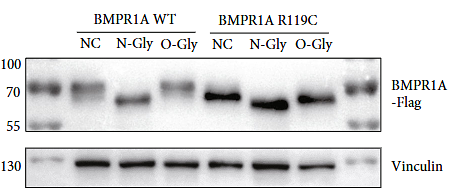
Journal: Human Mutation
Application: WB
Reactivity: Human
Publish date: 2025 Feb
-
Citation
-
MXene-inducing self-assembled Bombyx mori (B. mori) silk fibroin nanofibers improve the early cell adhesion and neuronal differentiation of neural stem cells
Author: Zhangze Yang, Meng Zhang, Yi Wu, Jiaping Xu, Jie Wang, Quan Wan, Zongpu Xu, Yajun Shuai, Junhui Lv, Jiaqi Hu, Chuanbin Mao, Shuxu Yang, Mingying Yang
PMID: 12NOPMID25092501
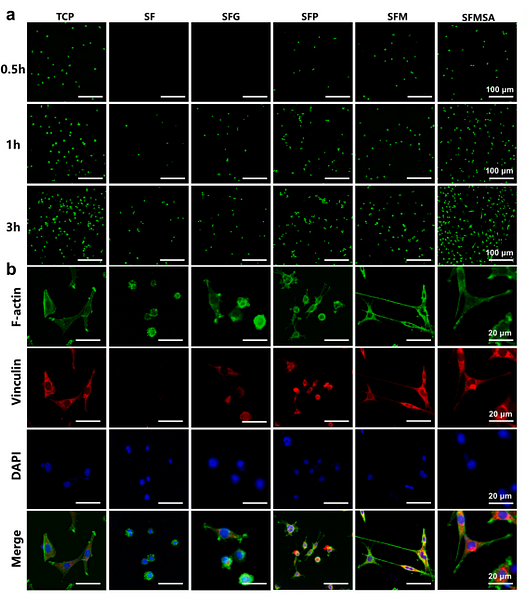
Journal: Chemical Engineering Journal
Application: IF
Reactivity: Rat
Publish date: 2025 Aug
-
Citation
-
Glabridin-Gold(I) Complex as a Novel Immunomodulatory Agent Targeting TrxR and MAPK Pathways for Synergistic Enhancement of Antitumor Immunity
Author: Zhaoran Wang, Meiyu Wang, Qiong Chen, Mengshi Wang, Fuwei Li, Lin Lv, Zhenfan Wen, Zhongren Xu, Yixia Yang, Chunyang Bi, Wukun Liu
PMID: 40842087
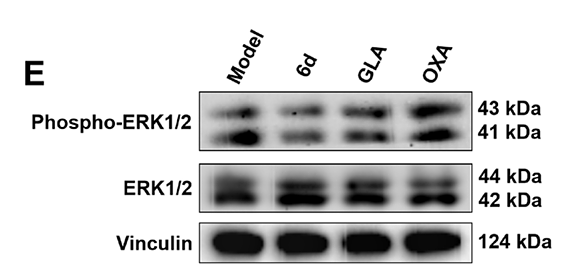
Journal: Advanced Science
Application: WB
Reactivity: Mouse,Human
Publish date: 2025 Aug
-
Citation
-
Developing patient-derived organoids to identify JX24120 inhibit SAMe synthesis in endometrial cancer by targeting MAT2B
Author: Chunxue Zhang,et al
PMID: 39293586
Journal: Pharmacological Research
Application: WB
Reactivity: Mouse
Publish date: 2024 Sep
-
Citation
-
Nicotine promotes Staphylococcus aureus-induced osteomyelitis by activating the Nrf2/Slc7a11 signaling axis
Author: Zhou Xuyou,et al
PMID: 38772295
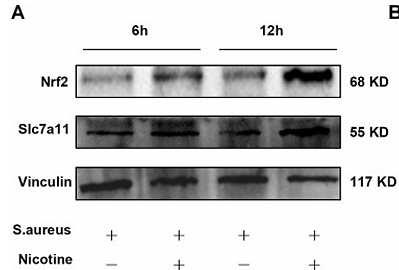
Journal: International Immunopharmacology
Application: WB
Reactivity: Mouse
Publish date: 2024 May
-
Citation
-
DIREN mitigates DSS-induced colitis in mice and attenuates collagen deposition via inhibiting the Wnt/β-catenin and focal adhesion pathways
Author: Lai Weizhi,et al
PMID: 38678963
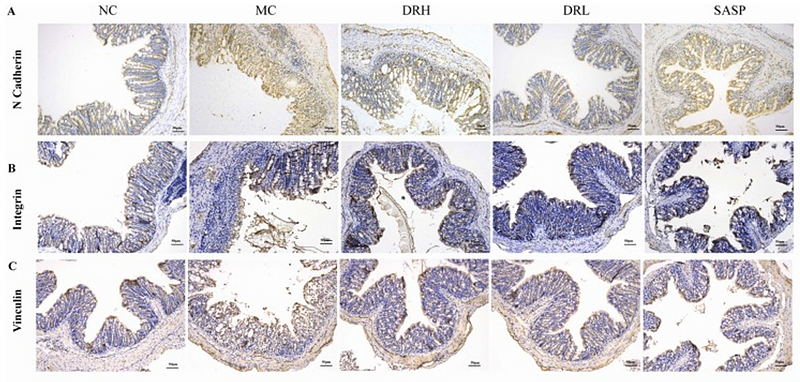
Journal: Biomedicine & Pharmacotherapy
Application: IHC-P
Reactivity: Mouse
Publish date: 2024 Apr
-
Citation
-
MC3T3-E1 cells lead to bone loss in Staphylococcus aureus osteomyelitis through oxeiptosis pathway
Author: Xu Yuan,et al
PMID: no pmid0514

Journal: Preprint And Has Not Been Certified By Peer Review
Application: WB
Reactivity: Mouse
Publish date: 2024 Apr
-
Citation
-
TWIST1 rescue calcium overload and apoptosis induced by inflammatory microenvironment in S. aureus-induced osteomyelitis
Author:
PMID: 37071966
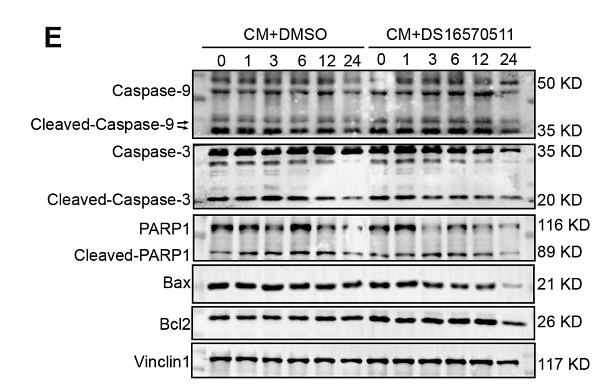
Journal: International Immunopharmacology
Application: WB
Reactivity: Mouse
Publish date: 2023 Jun
-
Citation
-
Enhancing cell adhesive and antibacterial activities of glass-fibre-reinforced polyetherketoneketone through Mg and Ag PIII
Author:
PMID: 37489146
Journal: Regenerative Biomaterials
Application: IF
Reactivity:
Publish date: 2023 Jul
-
Citation
-
Effects of matrix viscoelasticity on cell–matrix interaction, actin cytoskeleton organization, and apoptosis of osteosarcoma MG-63 cells
Author: Deng Huan,et al
PMID: 38079114
Journal: Journal Of Materials Chemistry B
Application: IF-Cell
Reactivity: Human
Publish date: 2023 Dec
-
Citation
-
Matrix Stiffness Regulated Endoplasmic Reticulum Stress-mediated Apoptosis of Osteosarcoma Cell through Ras Signal Cascades
Author: Deng Huan,et al
PMID: 37789235
Journal: Cell Biochemistry And Biophysics
Application: IF-Cell
Reactivity: Human,Mouse
Publish date: 2023 Dec
-
Citation
-
Targeting eIF3f Suppresses the Growth of Prostate Cancer Cells by Inhibiting Akt Signaling
Author: Guowei Shi
PMID: 32440143
Journal: Onco Targets And Therapy
Application: WB
Reactivity: Human
Publish date: 2020 May
-
Citation
-
Ang II-AT2R increases mesenchymal stem cell migration by signaling through the FAK and RhoA/Cdc42 pathways in vitro
Author: Hai-bo Qiu
PMID: 28697804
Journal: Stem Cell Research & Therapy
Application: WB
Reactivity: Human
Publish date: 2017 Jul
-
Citation
Products with the same target and pathway
Vinculin Recombinant Rabbit Monoclonal Antibody [JM42-43] - BSA and Azide free
Application: WB,IF-Cell,IF-Tissue,IHC-P
Reactivity: Human,Mouse,Rat
Conjugate: unconjugated


